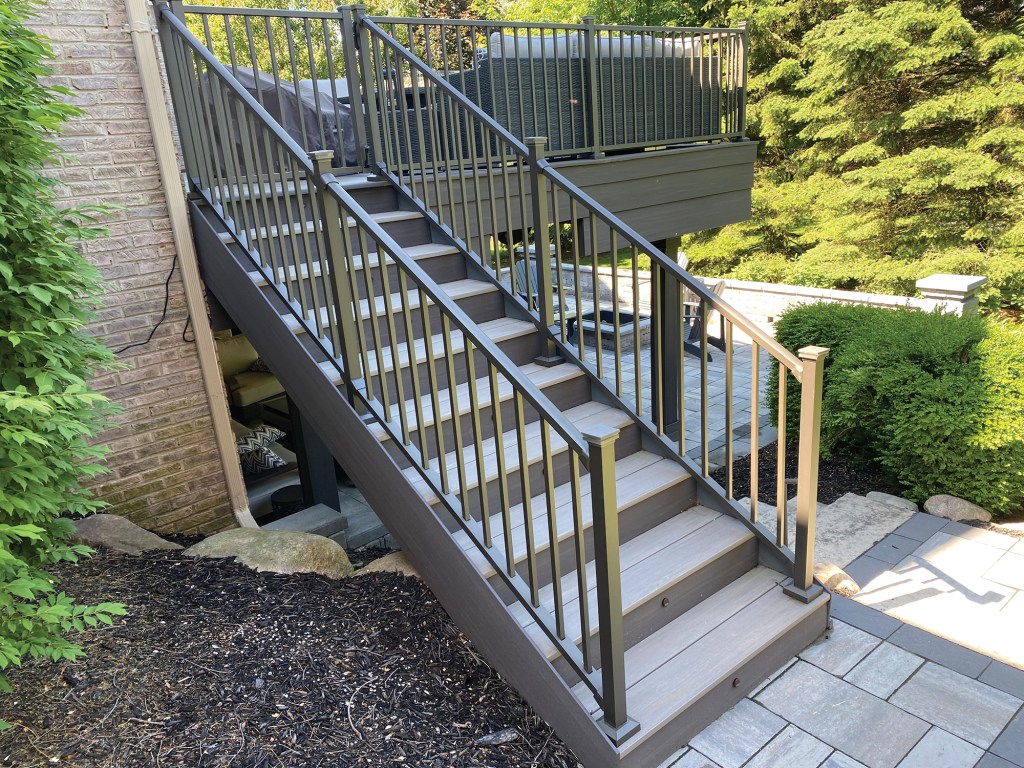When we are designing a new or replacement composite deck, we like to offer our clients different stair options to help differentiate ourselves from our competitors. Typically, this includes wrapping the pressure treated stringers with a composite fascia detail that conceals the cut ends of the treads and risers.
In our base stair package, for example, we screw composite fascia boards to the outside face of the stringers. While this closed stringer detail looks good and installs quickly, it tends to collect debris, and we’ve found that the fascia eventually separates from the framing.
That’s why I think our open-stringer options are a better upgrade. The first is inspired by interior oak stair treads that have short applied returns to hide the end grain. We cut a short 45-degree return on the tread nosing and a matching 45-degree cut on the return, and fasten the returns to the tread with adhesive—Loctite PL polyurethane construction adhesive for composite treads, and PVC glue with PVC treads—and two pairs of screws—one pair per deck board—that we drive through countersunk holes.
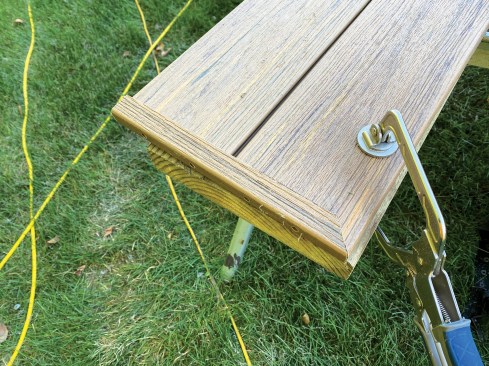
On open-stringer stairs, nosing returns can be cut and applied to the treads to mimic the look of interior stairs.
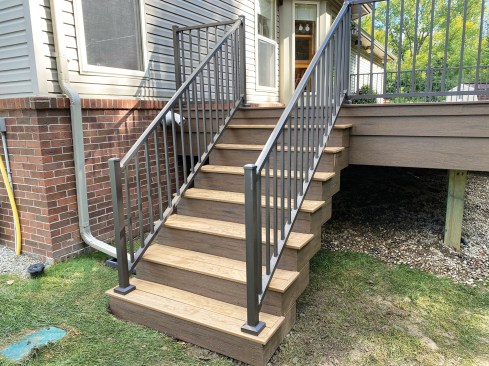
Open-stringer stairs are easier to sweep clear of debris and snow than closed-stringer stairs.
Another option is to wrap the stair risers around the stringers, and then cut the treads flush with the risers. Then we trim the fronts and sides of the treads with solid 5 1/2-inch-wide deck boards ripped down the middle.
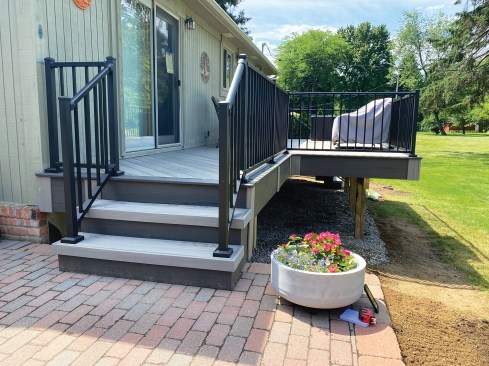
The author’s “two-tier” style looks good with contrasting treads and risers.
Our favorite way to finish an open-stringer style of exterior stair is with what I call a waterfall detail. While it requires a fair amount of extra blocking to support the waterfall and the ends of the treads, the detail doesn’t require any finicky 45-degree return cuts on the treads. I also like it because the look can be varied by using contrasting or matching colors for the treads and the waterfall.
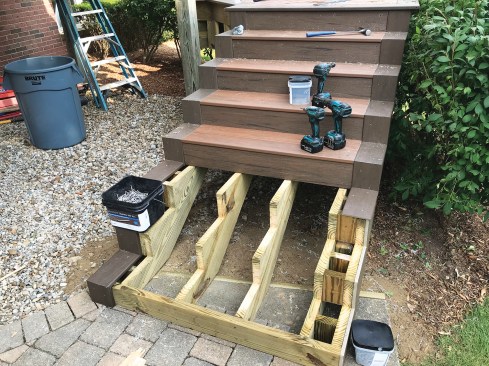
The “waterfall” style requires more blocking to support the ends of the treads.
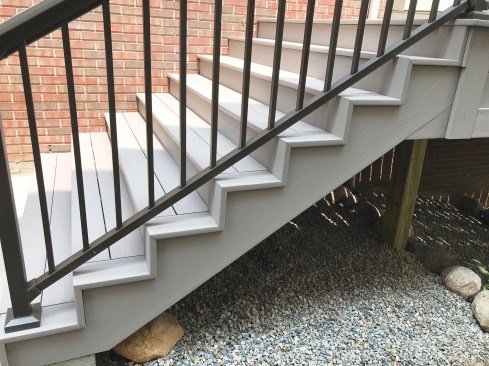
This style can be used with contrasting or single-color tread-and-riser combinations.
Photos by Bayn Wood.
Keep the conversation going—sign up to our newsletter for exclusive content and updates. Sign up for free.
